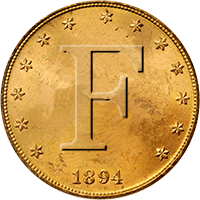US coins are so easy to identify......well except the penny. Depends whether it's zinc (or how rotted the zinc is) a recent wheat cent or an Indian head. They ID where they should, be it number, tone or icon. Well, Canadian coins are a plethora of mixed signals, depending on how much wear has eraseed the nickel coating from the elements. A recent quarter nickel plated will sometimes barely read at all. A worn one will bounce around 60's to 80's based on how much wear has developed. Today I switched to the thin coin mode with the single frequency of 25 kHz. I tried all the single frequencies and multi using thin coin mode. The 25 kHz worked the best. How so? It's all about the pixels. I get the strongest response with pixels on the graph with the higher conductivity bouncing back and forth from the lower numbers. Now, sometimes I get a bottle cap. I can't use the bottle cap reject on theVX9, as my coinage has iron in it. So, I really have to pay attention to which pixels appear where on the graph and the audio "squawk" which is similar to the AT Pro. No other make of metal detector that I am aware of gives me that much precise information. Because of that, I dig Canadian coins with a high probability. It would be interesting to see how well the thin coins mode would work finding deep silver coins? Anyone up to the challenge to give it a try and compare results using the thin coin mode?
Find's Treasure Forums
Welcome to Find's Treasure Forums, Guests!
You are viewing this forums as a guest which limits you to read only status.
Only registered members may post stories, questions, classifieds, reply to other posts, contact other members using built in messaging and use many other features found on these forums.
Why not register and join us today? It's free! (We don't share your email addresses with anyone.) We keep email addresses of our users to protect them and others from bad people posting things they shouldn't.
Click here to register!
Need Support Help?
Cannot log in?, click here to have new password emailed to you
I Used The Thin Coin Mode Today On The VX9.....It Was Like A Totally Different Machine!
- Thread starter John-Edmonton
- Start date


